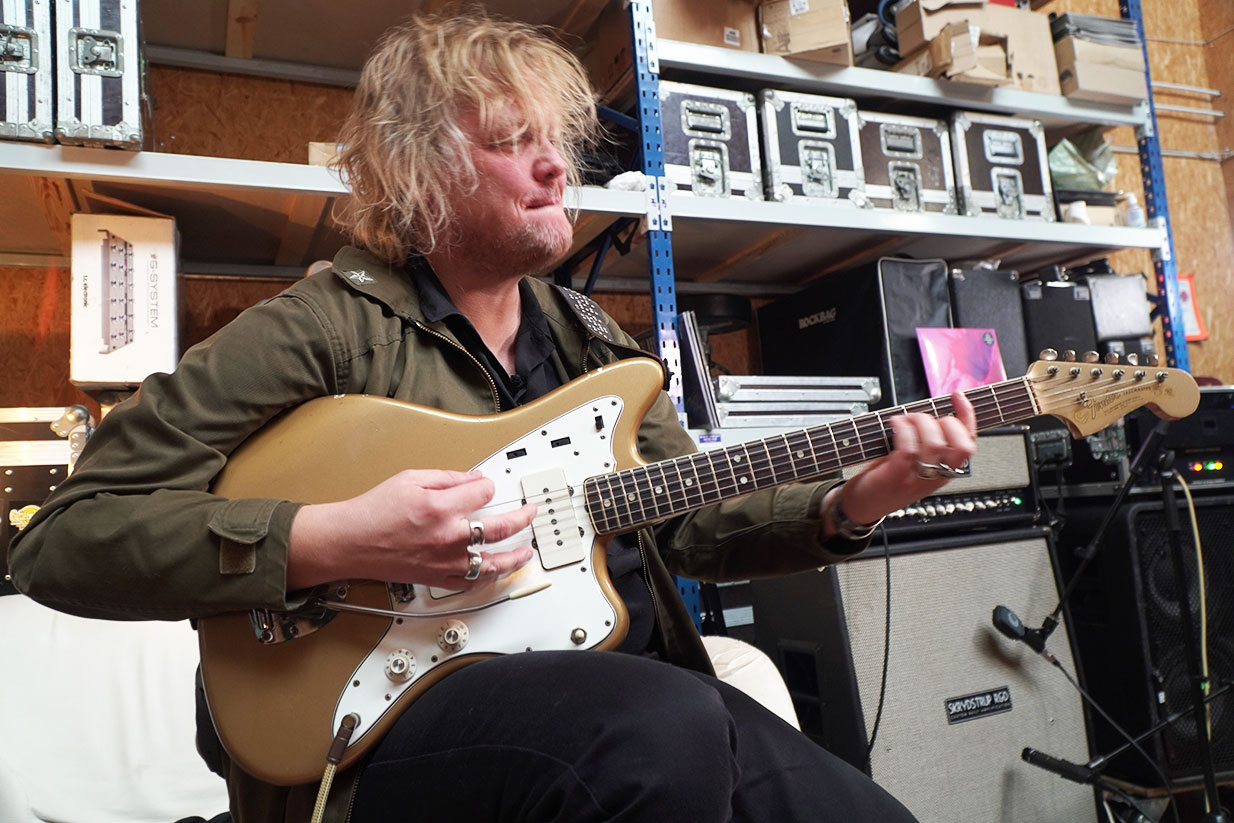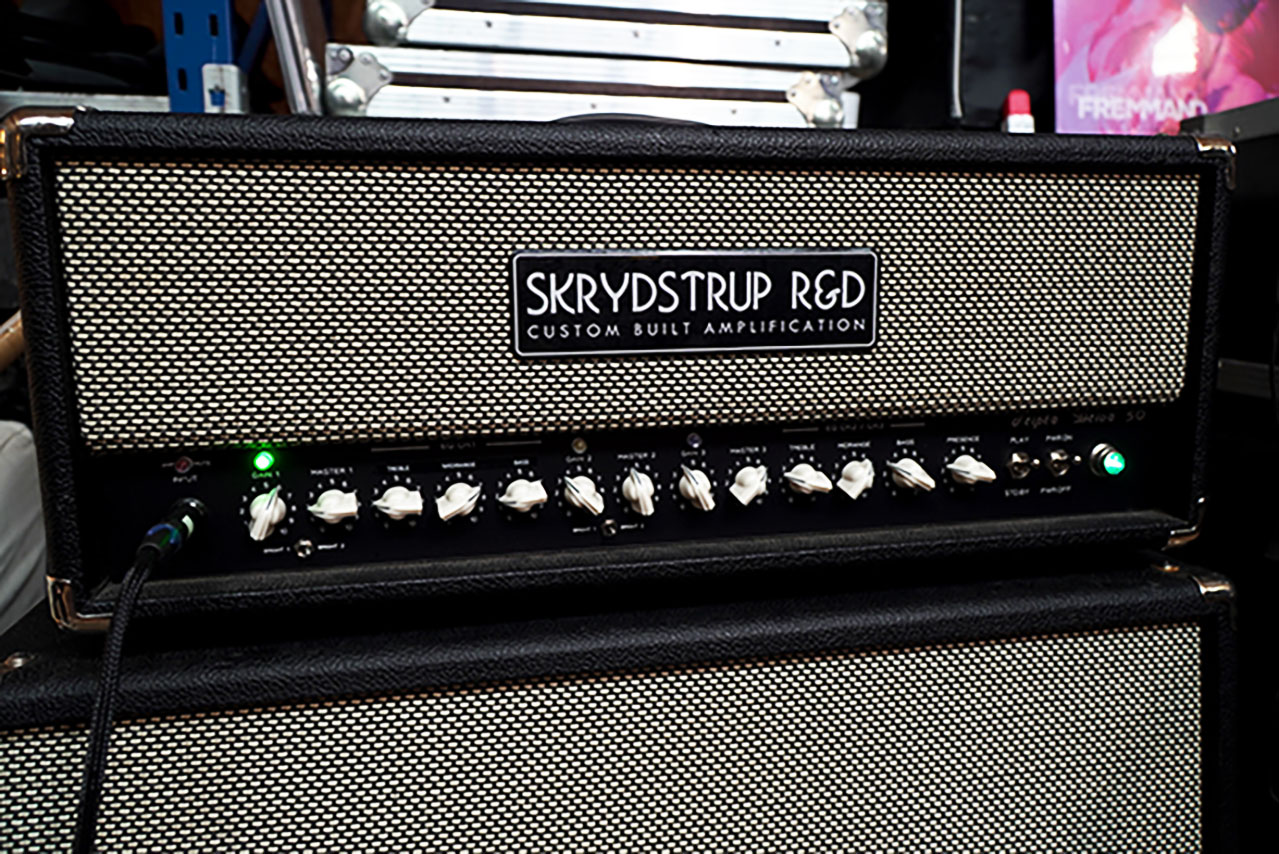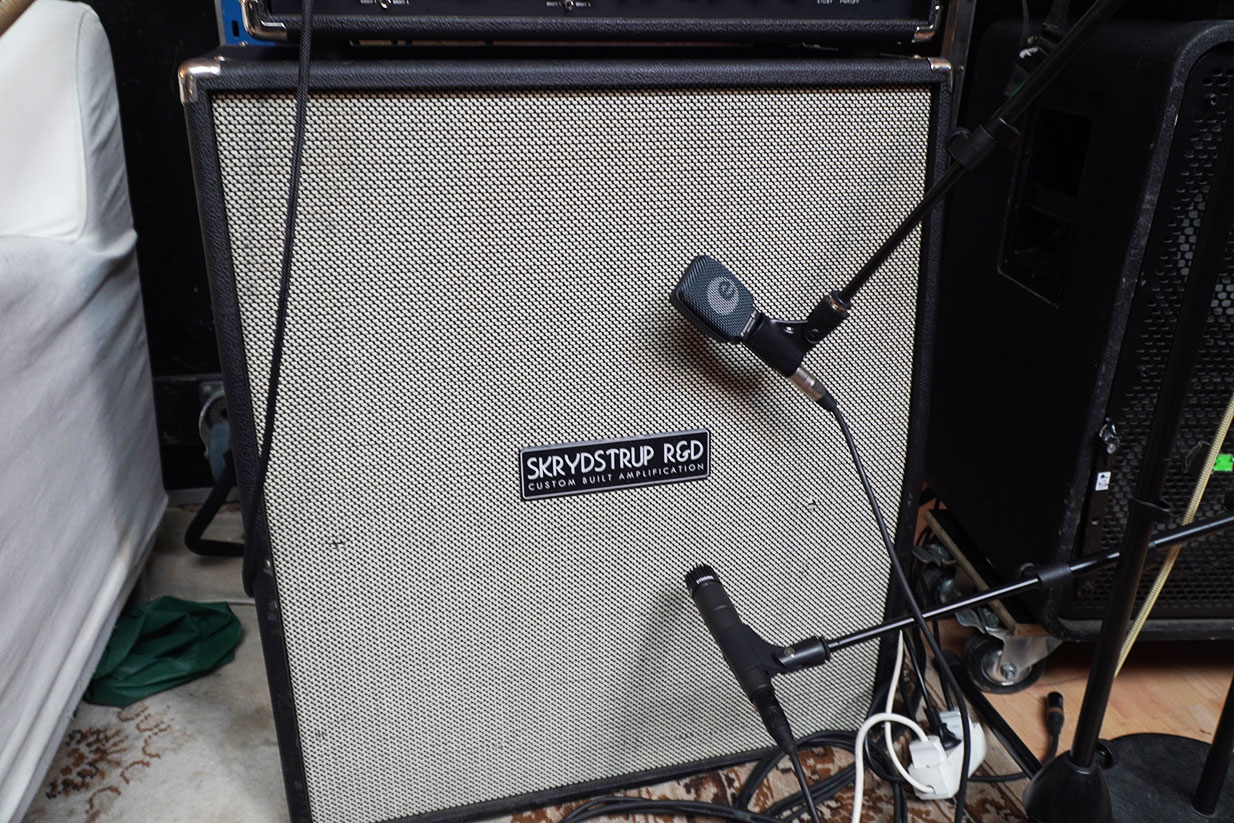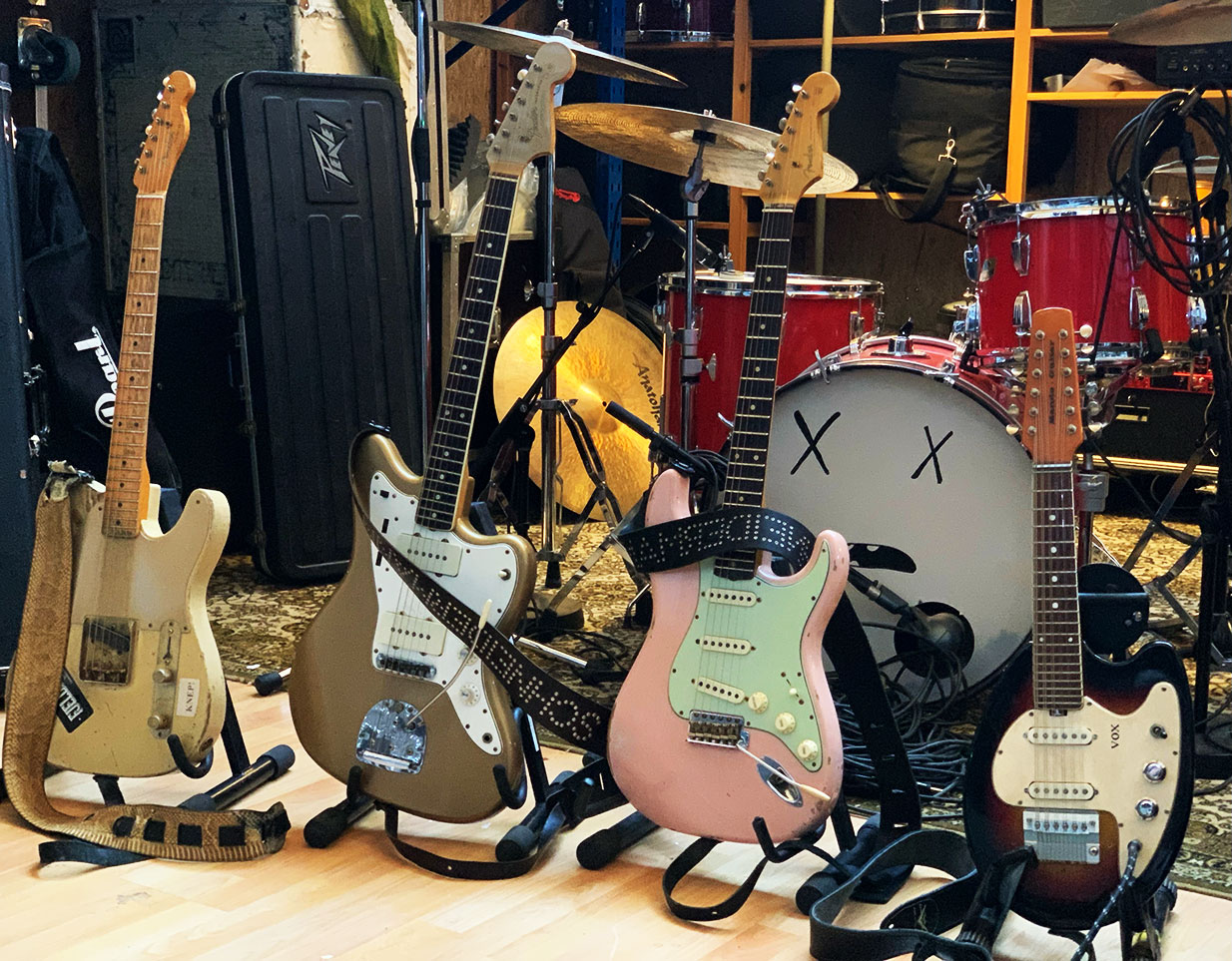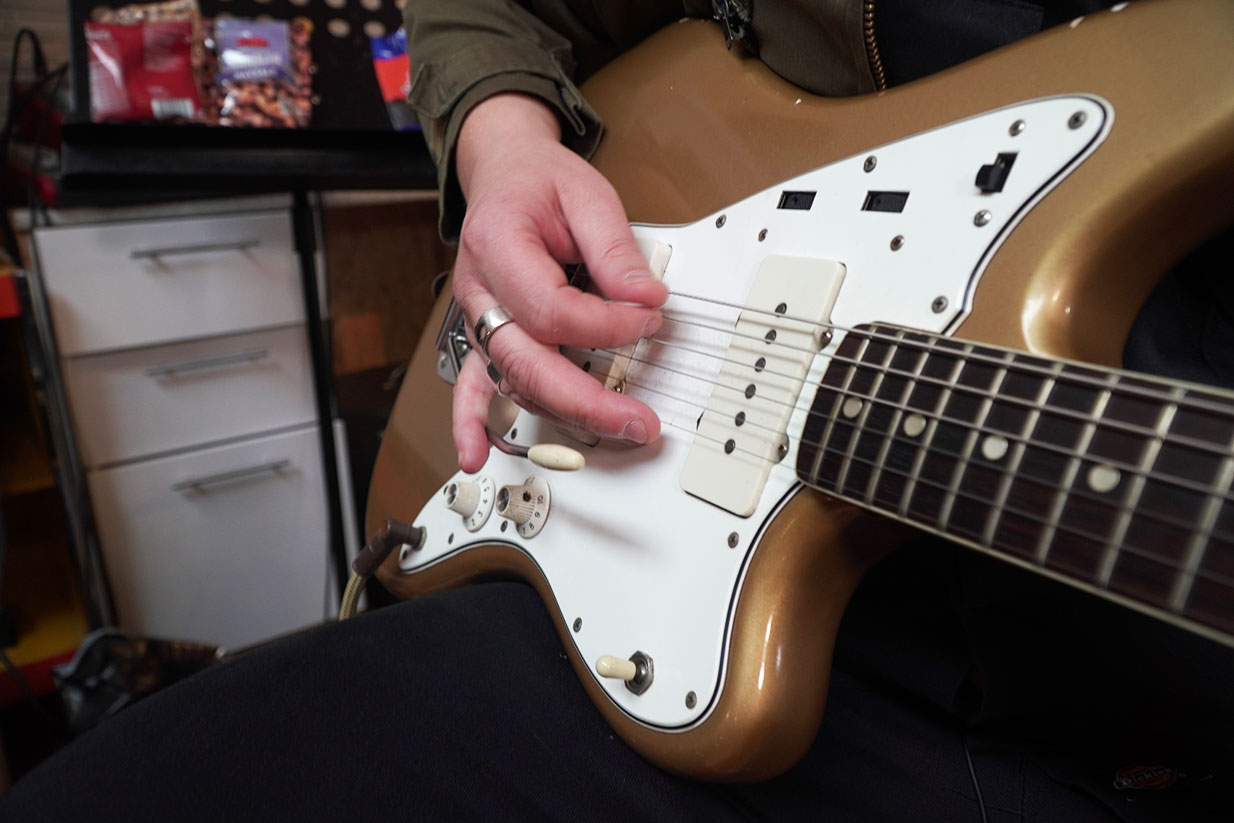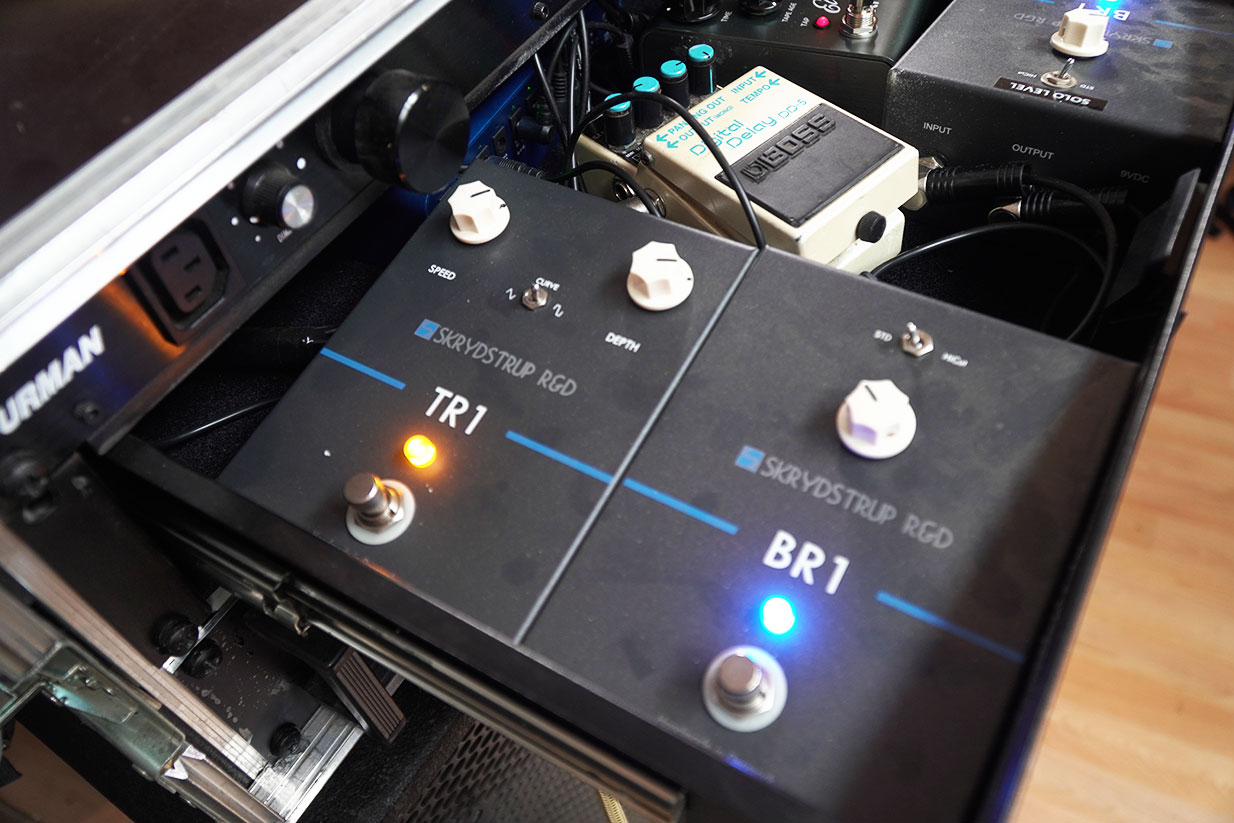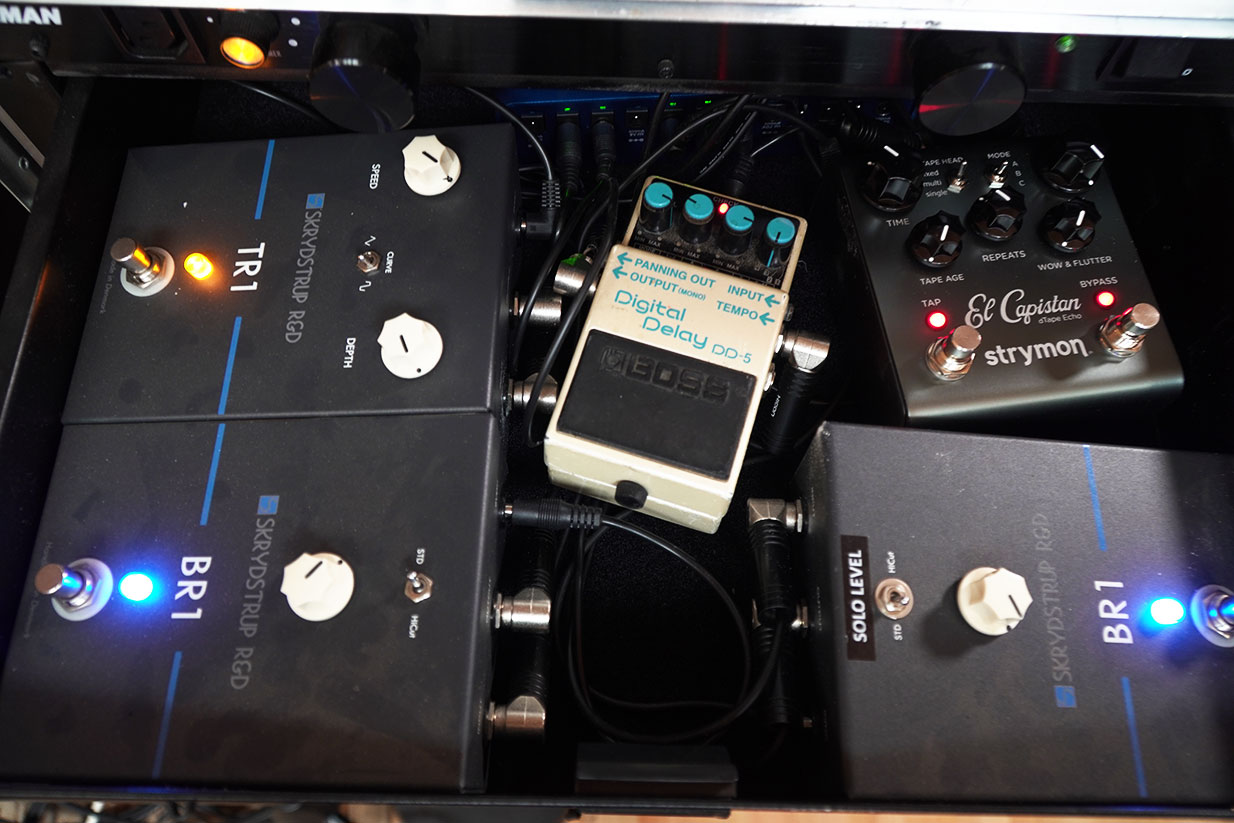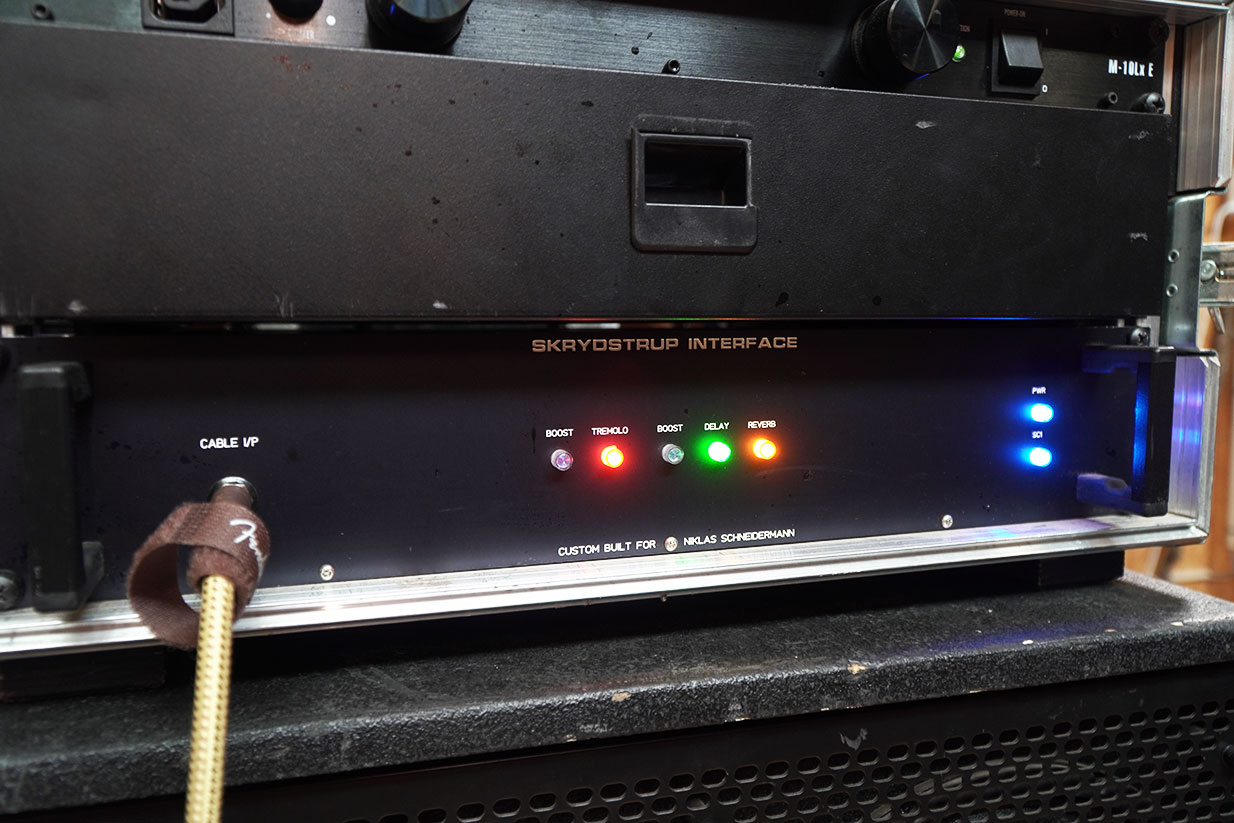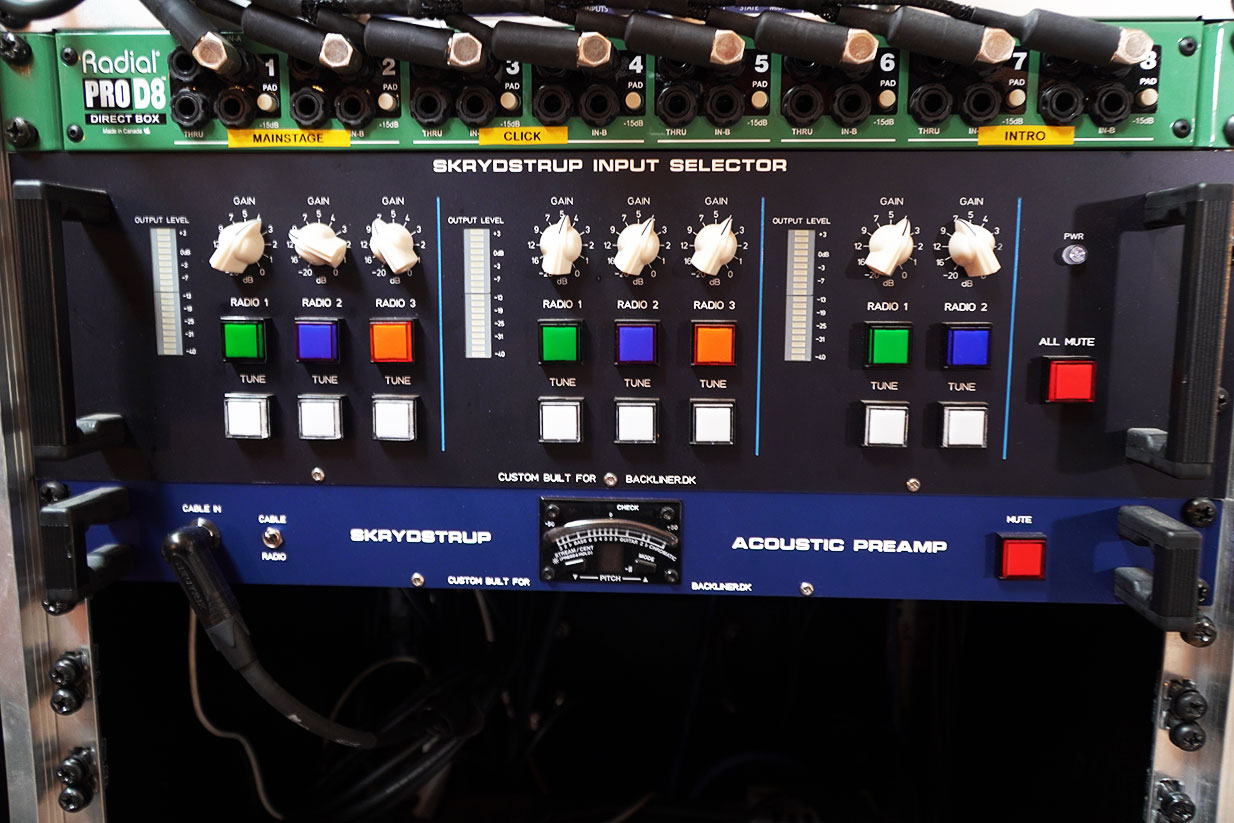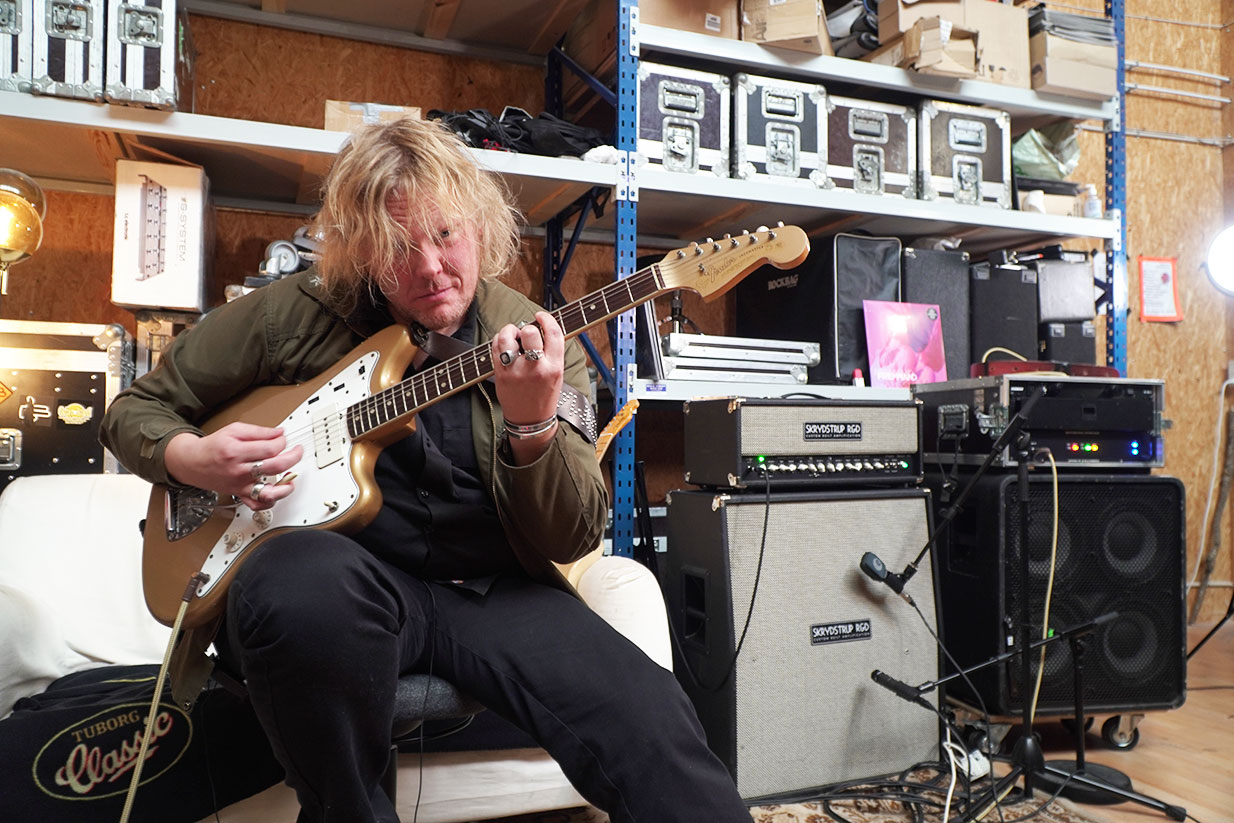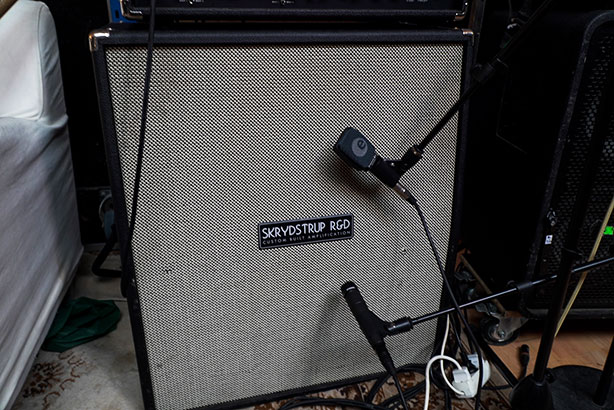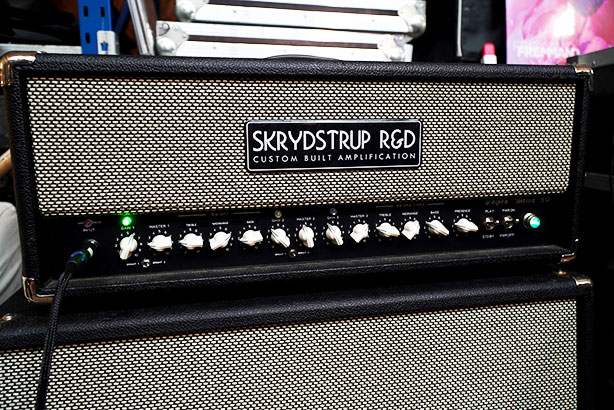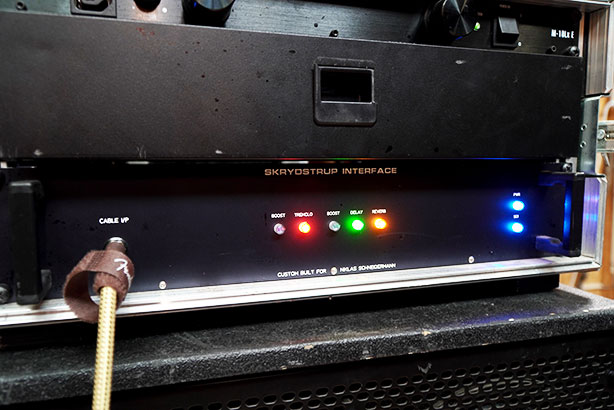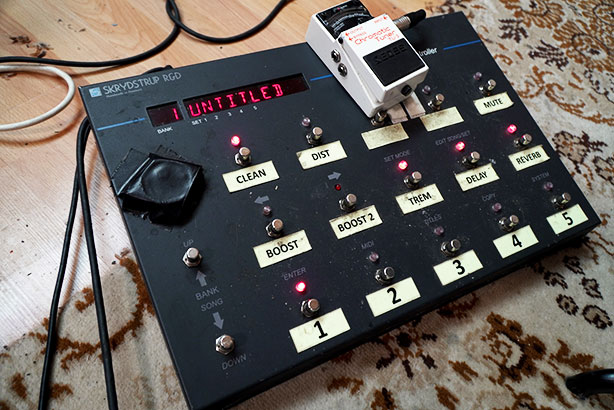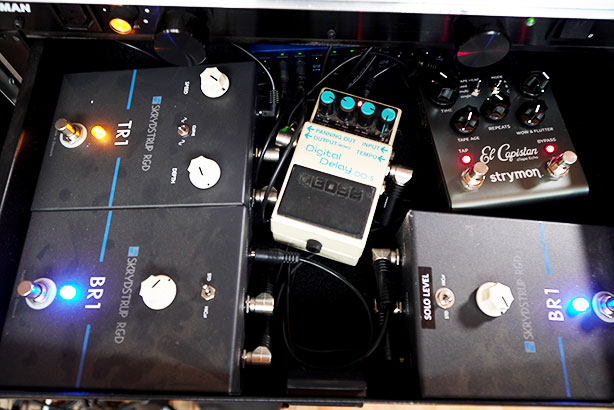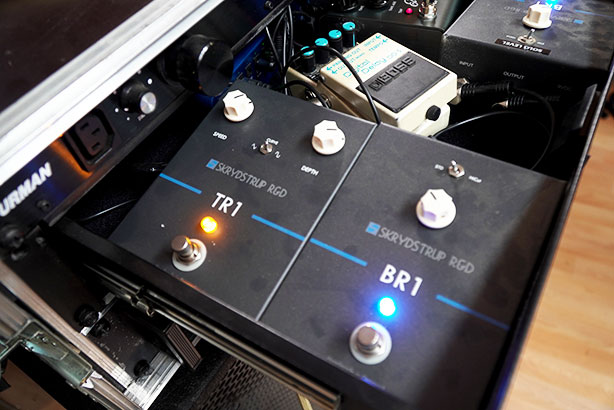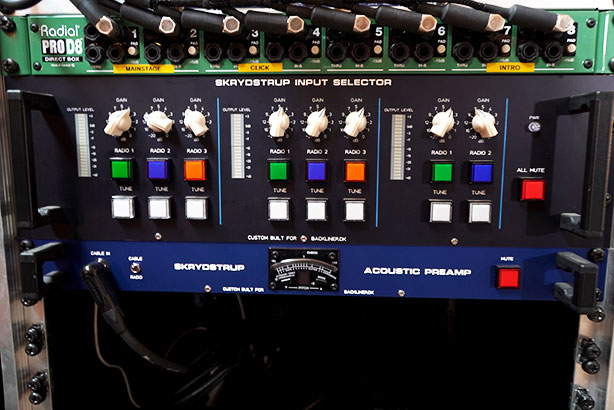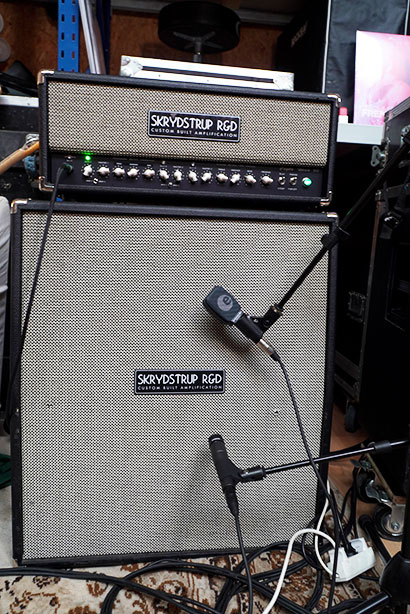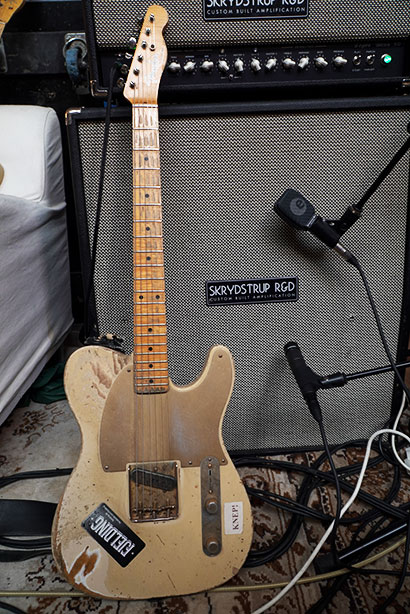As guitar players we are always searching for the ultimate tone!
One of the basic issues that everyone using a pedalboard is struggling with, is impedance mismatch.
Impedance
A general rule of thumb: A high impedance signal is very sensitive to resistance or to what load it sees. A low impedance signal is not. Most guitars and basses typically have a high impedance output.
A/B test
Whenever you want to do an A/B test it’s important to know your reference point.
In this case, the reference point is your guitar connected directly to your amp, using a 6m cable.
Most amplifiers have a 1Mohm (1 million ohm) input impedance.
The first thing we want to be sure of is that the guitar sees an input impedance of 1Mohm.
In the perfect world, all Stomp Boxes would have an input impedance of 1Mohm, but that is not the case.
If the first pedal in line has an input impedance of 100kohm (100.000 ohm) instead of 1Mohm, the guitar will sound different – typically you will lose high end frequencies/harmonics and volume. – All the fun stuff.
Equally important is the output impedance of the last pedal. Often it is way too high to drive a long cable back to the amp. The output impedance should not be more than 100ohm.
How can we solve this?
Buffer solution
The solution is using a Buffer as the first and last unit. A Buffer is a small amplifier circuit that converts your high impedance input to a low impedance output. It has the same input impedance as an amplifier, which means the guitar will sound the way it should.The output is low impedance, which means it’s less sensitive to what load it sees or the length of the cable from your pedalboard to your amp.
Choose the right Buffer
There are different Buffers on the market and they don’t sound the same. Due to the Buffer being a small amplifier circuit, it will have a sound of its own. Make sure you choose a Buffer, that doesn’t color your sound noticeably.
At Caveman Audio we’ve developed a Dual Buffer called BUF1.
Dual Buffer
Beside the input Buffer we added a second Buffer to help you drive very long cables from your pedalboard back to the amp, without any tonal loss. Adding this pedal to your pedalboard will really improve your tone.
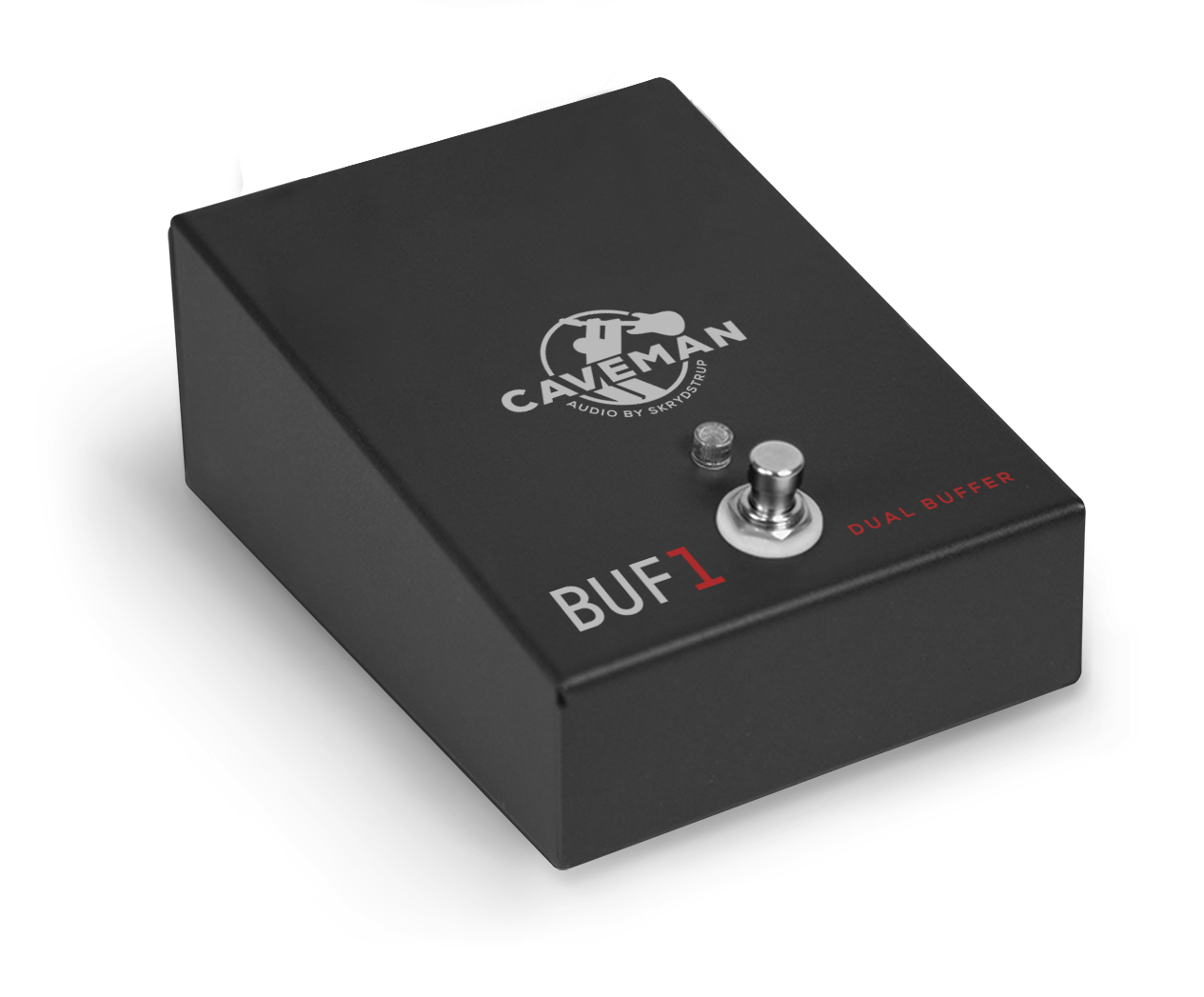
Niklas Schneidermann
We met up with guitarist Niklas Schneidermann from Magtens Korridorer in the band's rehearsal room in Copenhagen (September ’21). He kindly showed us his rig and demonstrated some of the settings he uses, when playing live with Magtens Korridorer. Niklas' main piece of gear is his 3 channel tube amp, that he uses for three different types of overdrive sounds.
The amplifier & cabinet
Niklas is an avid Caveman Audio user and has multiple custom-made products from Steen Skrydstrup. Niklas has been playing the VOX AC50 amp for many years. Three years ago he decided to shift to the Skrydstrup TD50 Triple Drive amp. Last year Niklas tried going back to the Vox amp, but quickly realized that after playing the Skrydstrup amp, there was no turning back. - It simply sounds better!
Niklas is getting his dirt sounds from the amp, which has three levels of overdrive. Channel 1 ranges from fat and warm clean tones to gentle overdrive, Channel 2 goes from fast overdrive tones to high-gain bliss, and finally, Channel 3 takes you from a punchy-power-chord type of sound to screaming high-gain lead tones.
The Skrydstrup TD50 Triple Drive is now called Caveman Audio X3 - 3 Channel amp. The name is new, but the amp is the same. The guitar cabinet used is a Caveman Audio 412-V30 Cab.
“For the past three years, I have needed to have my Skrydstrup amplifier with me, because it just sounds fantastic - even when I play it!”
-Niklas Schneidermann (Magtens Korridorer)
Niklas’ favorite guitars
Niklas uses a variety of guitars, but mainly uses three types, when playing live with Magtens Korridorer.
His main guitar is the Fender Custom Shop Esquire Telecaster, which has an old beat up look. He also has a spare Fender Custom Shop Esquire Telecaster, this one with fancy gold paint.
Niklas’ latest edition to the guitars, is the Fender Jazzmaster Firemist gold ’65 that he purchased last year.
Also added to the guitars that will be going out on tour shortly, is the Fender Custom Shop LTD 60 Strat Relic in shell pink finish and a rare Vox Mandoguitar from the 60’s.
"Back to basics - just with great sound”
-Niklas Schneidermann (Magtens Korridorer)
Pedals & effects used live
The switching is controlled by the SC1 Midi Foot Controller from Caveman Audio. Niklas appreciates the noiseless switching he gets when using the SC1 controller, opposed to a regular pedalboard. Niklas likes to keep his setup simple and does not have a lot of pedals. These are the pedals that he uses live:
Caveman Audio TRM1 Opto Tremolo
2x Caveman Audio BOS1 Boost 28 booster pedals
Boss DD-5 Digital Delay
Strymon El Capistan Tape Echo
“The great thing about the SC1 Midi Foot Controller, opposed to using a regular pedalboard, is that you can get the sounds from all your favorite stompboxes without all the noise and the hiss”
-Niklas Schneidermann (Magtens Korridorer)
Custom-built products
Niklas is using a Skrydstrup custom-built interface in his rig. When playing live he also uses a Skrydstrup Input Selector as well as a Skrydstrup Acoustic Preamp, to make sure his acoustic guitar sounds right when playing live.
Niklas Schneidermann's Gear
The ultimate solution
Is this the ultimate solution? – No, it’s not.We can improve your setup even more.
We have two solutions that offer what we believe is the ultimate solution. -The MR5 and the MR10 Loop Systems.
The MR5 supports five pedals, whereas the MR10 supports 10 pedals.
Using one of the MR Loop Systems will make you experience the real sound of your Stomp Boxes, without the impedance mismatch that you normally have in conventional loop systems.
The MR-system features impedance correction on every loop both on the input and the output side.
The result is that each Stomp Box sounds as if it was the only unit in your system, regardless of the combination you select.
The MR-series is without a doubt the most noiseless and silent switching loop system available.
Even in high gain and very high volume applications and of course, they support both Midi program- and control change commands.
Some would probably think “Is this really needed, when my pedals have True Bypass?”
I’m sorry to say that True Bypass is more a marketing gimmick than an asset to your sound.
It makes things a lot more complex as the impedance misalignments gets even more random depending on the combination of Stomp Boxes being on and off. So don’t be fooled by this True Bypass thing. – I’ll explain this issue in depth in another blog post.
I highly recommend you to have a look at your pedalboard. If you don’t already have a Buffer then get one and be sure to choose the right one.

